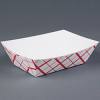
Wok Info Page
Wokking is a fun alternative to the typical grilling and barbeque cooks. With little effort, it can be a healthy cook too. Here are some basic pointers to get you going.
Two things to Google:
- seasoning a wok; and
- wok recipes.
Round bottom woks are best, as they make stirring easy and distribute the heat evenly. Thin carbon steel is the best metal for woks. Thin carbon passes the heat quickly and provides even temperatures into the cooking zone. Cast iron absorbs energy (heat), so it is not the best vessel for wokking. Stick with thin carbon steel woks. Our woks are the one thing we import from Asia.......just makes sense to us, given the history of wok cooking!
With recipes, there is an order for adding ingredients during the cook. Generally, the first is oil, then aromatics when the oil is hot. From there, it is what cooks the longest - proteins, hard veggies to soft veggies. Veggies that add flavor, like onions, go in early. Veggies like peas and sprouts, go in last. Carrots and water chestnuts are hard, so in the pool (wok) early. If you have time, parboil hard veggies some before wokking. There are some tools you'll need:
- Our Spider or Woo (with lower ring) work best for holding a wok in the cooker. We don't recommend the wok rack as most are aluminum. Ceramic grills can get hot enough to melt aluminum. The Spiders and Woo Rings are fabricated with Stainless and won't melt.
- a wok rack holds the wok outside the cooker, remember round bottom woks roll side-to-side when placed on a flat surface;
- a good pair of gloves for hand protection when handling the hot wok. Wokking is a fast cook with much movement.
- utensils to move, stir, the cook. We do not recommend wok ladles or spoons. The kind with the wooden handle tips. All they do is scratch off the seasoning and the wood tips seem to always fall out. We recommend a wood spoon while wokking and a small, rounded, slotted spoon for removing the food. The slotted spoon can be metal but rounded, no sharp edges.
- Not many of the typical wok cooks require a wok cover, basket or specialty tool, so unless you are a wok veteran, no need to hurry out and purchase these items.
- We see a big vessel and think, one big cook is better and faster than a couple small cooks. Wrong! It's better to do two small wok cooks than one big wok cook.
- We don't take the time to cut the ingredients up into small, uniform pieces. Simply - small means a quicker cook and uniform means a quality result. Investing in a little extra prep time will pay dividends with the finished dish.
Building the fire is straightforward. All you need s a good steak fire, something in the 550 to 600 degree dome temperature range. At these temperatures, it's possible to flash the cooker - remember to burp when opening the dome. When wokking, the dome is typically open, as you are actively engaged in the cook. Plan accordingly with the lower vent setting and your personal protection.
You might want to spend a little time reading up on the differences between smoke and flash points of cooking oil. Did I mention, you might want to spend a little time reading up on smoke and flash points of cooking oil. Just have a plan ready encase the oil (vapors) ignites. Remember, putting water on burning oil is never a good idea.
When ready to wok, it's best to have everything at the cooker. Wokking is a fast cook, so have what you need at arms reach. Also, have a work spot near the cooker - a place to set the wok when the cook is done and you are ready for plating.
 If you wok often, then you might consider picking up a bundle of hot dog boats. They make great dishes to hold the separate ingredients prior to wokking. The boats are cheap and at the end, just toss 'em for easy clean up.
If you wok often, then you might consider picking up a bundle of hot dog boats. They make great dishes to hold the separate ingredients prior to wokking. The boats are cheap and at the end, just toss 'em for easy clean up.
Oh, and there is more than Asian flair to wok: how about Italian........shrimp scampi

